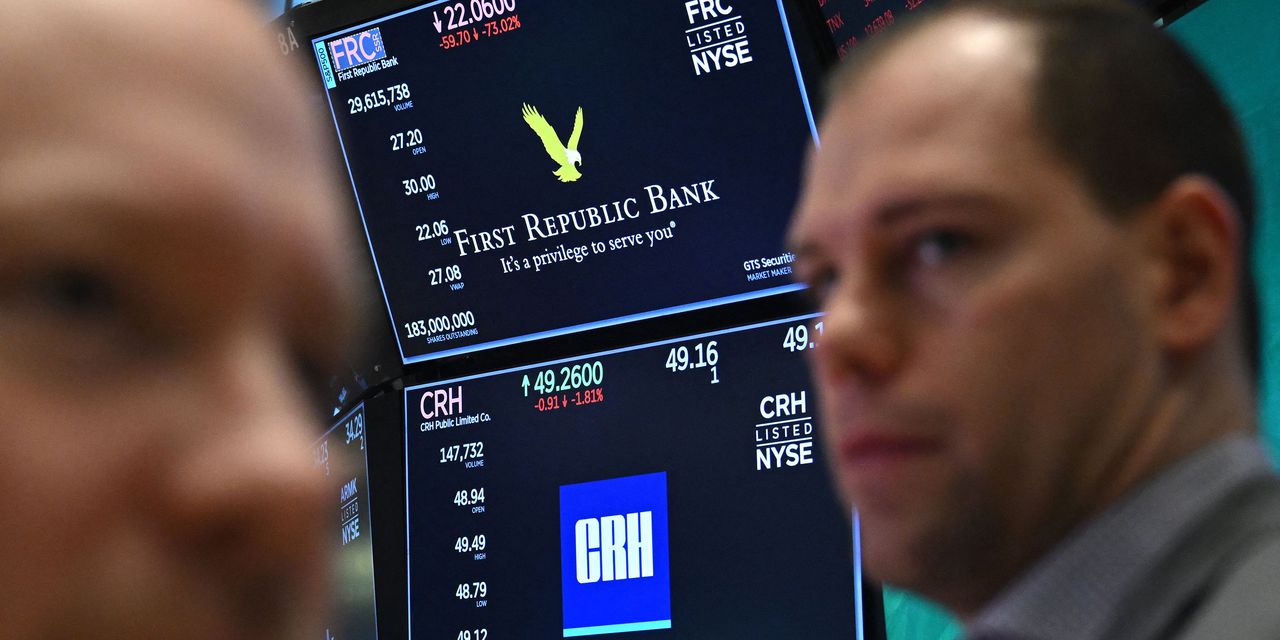Timothy A. Clark/AFP/Getty Images
Bank stocks have been beaten down so much this year that they’re now starting to look attractive.
The sector ended the week in positive territory—an encouraging sign since the
KBW Nasdaq Bank index
(ticker: BKX) and
SPDR S&P Regional Banking ETF
(KRE) just suffered their worst quarters since 2020, when the market had to contend with the early days of the coronavirus pandemic.
Now banks face a different set of problems. The rapid rise of interest rates over the last year means that banks’ bond portfolios are sitting on billions of dollars of unrealized losses. For most banks, those losses will only be on paper, but as Silicon Valley Bank and Signature Bank learned last month, theoretical losses can turn into actual ones if depositors rush to withdraw their funds all at once.
Three weeks since SVB and Signature collapsed, Wall Street is taking a more nuanced view of the banking sector. Analysts say those banks were brought down by a unique set of circumstances involving their deposit base and risks they took on their balance sheet.
“Silicon Valley Bank (SVB) was an oncoming train wreck hiding in plain sight. It faced a fairly unique combination of issues that were exacerbated by today’s similarly unique market environment,” write Ty Cobb and Kim Mayer of GMO, an asset management firm.
While no one is predicting an easy time for the sector, many on Wall Street are starting to think that the problems of a few banks were being unfairly attributed to many. As such, the sector looks cheap by most standards. The top 20 bank stocks are trading at book value, or 1.4 times tangible book value, compared with peak levels of 1.6 times book value, or 2.2 times tangible book value, Gerard Cassidy, analyst at RBC Capital Markets, writes.
“We believe today’s valuation levels make the group attractive both on an absolute and relative basis. Investors who believe that the economy won’t enter a deep recession should look to own bank stocks, in our view,” Gerard Cassidy, analyst at RBC Capital Markets, wrote.
Holding bank stocks will mean paying attention to several data points at once—particularly when making year-over-year versus quarter-over-quarter comparisons.
For example, the beginning of the Federal Reserve’s rate-hiking cycle was initially good for banks, which were able to charge more interest on the loans they made but weren’t yet feeling pressure to pay more to depositors. This is why Cassidy expects to see a 6.4% year-over-year increase in earnings per share for the first quarter of 2023 while seeing a 5.3% decrease compared with the fourth quarter of 2022. Similarly, Cassidy expects that net interest income will increase 34% year-over-year but will decrease by 2.2% quarter-over-quarter.
Net interest margin (NIM), which is the spread between the interest banks earn on loans and the interest they pay to borrow, will also likely narrow quarter-over-quarter, Cassidy notes. However, he expects that NIM will expand within six months of the Fed stopping rate hikes as banks will no longer be pressured to pay more for deposits.
With bank stocks hovering around bear market territory, it can be an enticing time to buy. But for investors who want more evidence, they’ll get plenty when banks start posting first quarter results on April 14.
Write to Carleton English at [email protected]
Read the full article here










